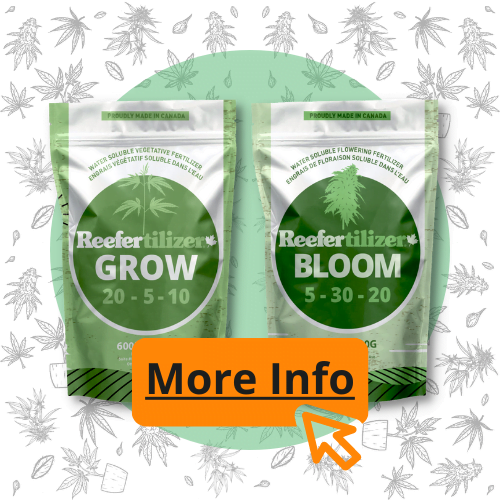We all know that plants take in nutrients through their roots, but if you’ve never heard of foliar feeding, you may not know that there’s a second way.
Foliar feeding is a term for applying a mist of nutrients directly to a plant’s leaves, where they are absorbed quickly.
It’s no replacement for a good mix of nutrients in your plant’s soil, but foliar feeding can help your plant recover quickly from nutrient deficiencies in certain situations. Keep reading to find out how.
Did You Know?
Reefertilizer Grow and Bloom can be diluted and used as a foliar spray.
Save when you buy the Grow and Bloom bundle.
How Foliar Feeding Works
A plant’s leaves are often compared to a mammal’s lungs: they both complete the same function of allowing us to breathe.
And, much like humans can absorb things like THC and CBD through our lungs, plants can absorb certain nutrients through their leaves…
So in a nutshell, foliar feeding is basically vaping for plants.
Jokes aside, there are still more parallels.
Just like how humans absorb THC faster when vaping than when consuming edibles, plants absorb nutrients more quickly through the leaves than the roots.
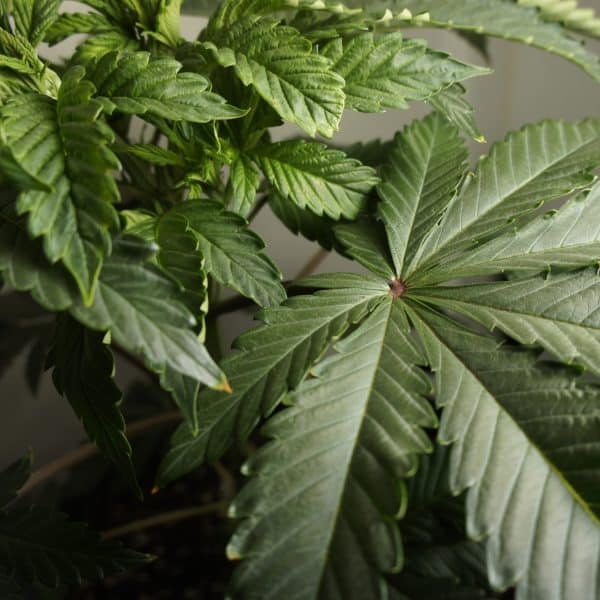
Foliar feeding works, but there is some debate as to how effective it is and how exactly it works.
Controversy
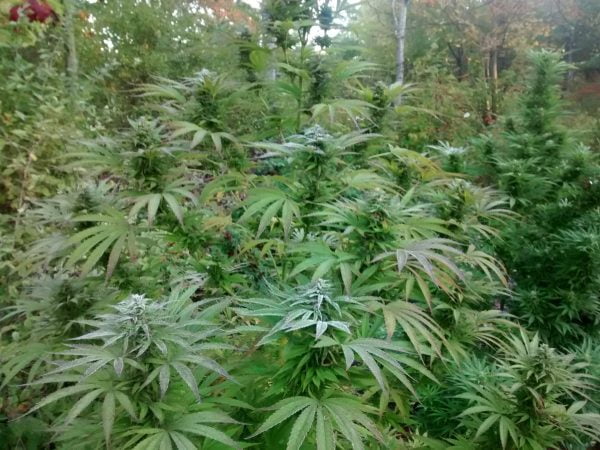
These micro-pores have negative charges, which attract certain positively charged compounds – some of which are beneficial nutrients for your plant.
Some extreme proponents of foliar feeding claim that the leaves actually absorb more nutrients (up to 95%) than the roots.
This is simply not true.
According to that same research, only 15-20% of the nutrients you apply to your plant’s leaves will actually be absorbed.
The nutrients that are absorbed won’t be distributed throughout the plant as effectively as they would if they were absorbed through the roots.
In short, this has to do with the molecular makeup of different nutrients.
Smaller molecules and molecules with smaller positive charges travel through the plant more easily and quickly.
On the other hand, larger, more positively-charged molecules may get stuck to the negatively-charged cell walls in the leaves, preventing them from moving after entering the leaf.
With that in mind, foliar feeding works much better for some nutrient deficiencies than others – nitrogen, potassium, and magnesium, for example.
When to Foliar Feed
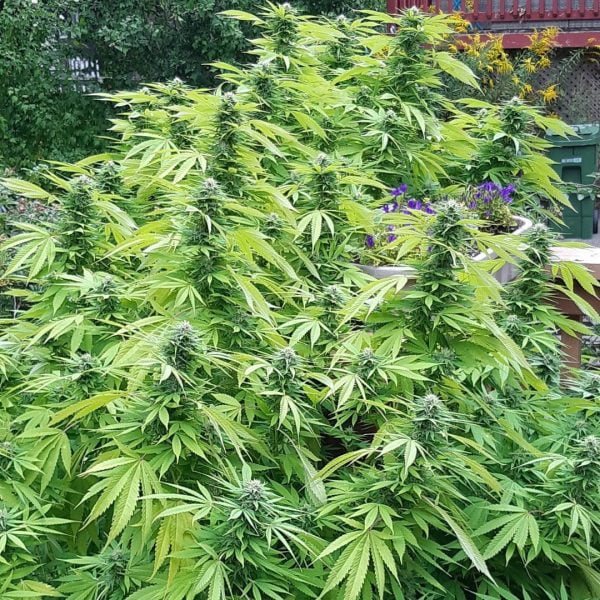
As mentioned above, foliar feeding is no substitute for maintaining a healthy balance of nutrients in your plant’s soil.
Some foliar feeding as a supplement could help your plant grow somewhat bigger – but with only 15-20% of the nutrients actually getting absorbed by the plant through the leaves, it may not be the most efficient use of your resources.
Where foliar feeding is really useful is when your plant has a nutrient deficiency that can be quickly cured by a fast-acting dose of nutrients through the leaves.
If you spot the signs of nutrient deficiency, think about giving your plants a supplemental spray!
How to Foliar Feed
The first step in foliar feeding is preparing your spray solution.
It doesn’t matter too much whether you use a hand sprayer or a garden pump sprayer; but, you don’t want to drown your plant’s leaves in nutrients and give them nutrient burn, so make sure your solution is mixed properly.
Many brands’ packaging has instructions on how much to dilute the solution. If not, start slow and work your way up.
Take note that you don’t need to buy a whole new nutrient product for foliar feeding.
You can usually use whatever fertilizer you’re feeding your plant at your roots – they are the same nutrients, after all – but you’ll want to dilute it more than you would for soil.
If you’re using Reefertilizer’s Grow or Bloom fertilizers as a foliar spray, we recommend starting with a ¼ strength ratio.
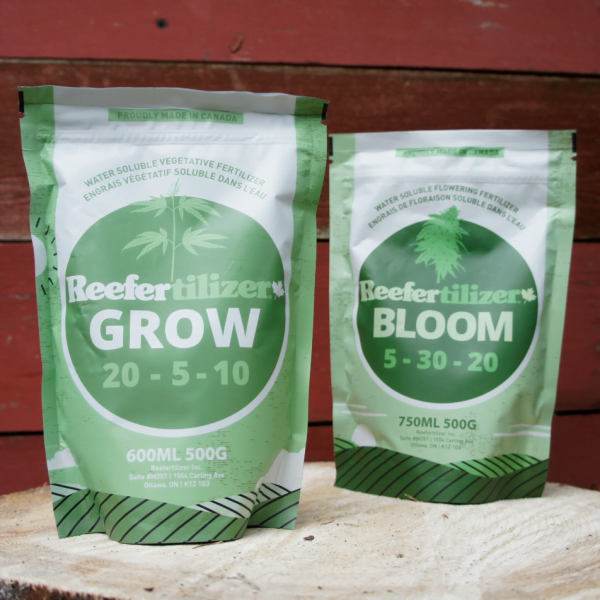
Common advice you’ll hear about foliar feeding is some variation of “don’t spray during the day.”
Often, growers say this because the stomata are open in the evening, not all day, and don’t want to waste nutrients.
Even though we know that your plant absorbs nutrients through the leaf cuticles rather than the stomata, it’s still good advice to wait until evening for your plant’s foliar feeding.
This is because in full sunlight (or under strong artificial grow lights), droplets of water on your plant’s leaves can turn into tiny magnifying glasses and burn the leaves.
Tips and Tricks
Foliar feeding isn’t too complicated, but there are a few more things to keep in mind:
- Don’t spray during the flowering phase! You don’t want to risk getting the spray on any of your buds, because it does affect the flavor.
- Worried about your nutrient mix? Spray one plant in your garden first and wait a day to see how it responds before addressing your other sick plants.
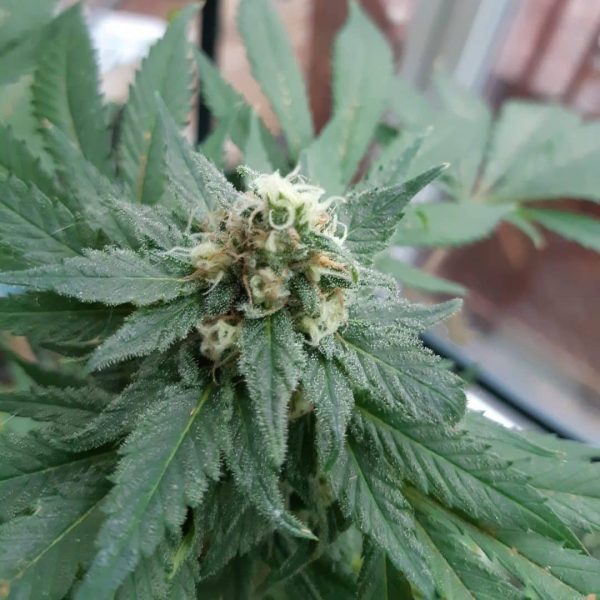
- Spray the top and bottom of each leaf. The entire surface of the leaf can absorb nutrients, so make sure you mist the whole thing.
- Use a very fine mist. You don’t want to leave any of your leaves dripping after foliar feeding; they should just be damp, with plenty of time to absorb all the moisture by morning. You don’t want any droplets remaining by sunup (or lights-on) in the morning, or you’ll risk burning.
Just like humans can absorb certain chemicals through our lungs, cannabis plants can absorb certain nutrients through their leaves – and it happens much more quickly than it does through the roots.
Plants still need to eat normally, but foliar feeding can be a really useful technique for fixing a nutrient deficiency rapidly. Just don’t overdo it.
Happy feeding!
If you want to learn even more about growing good cannabis, we offer a free 40+ page guide full of images.
Now available on Amazon.
Sign up for our newsletter and download the digital copy today!
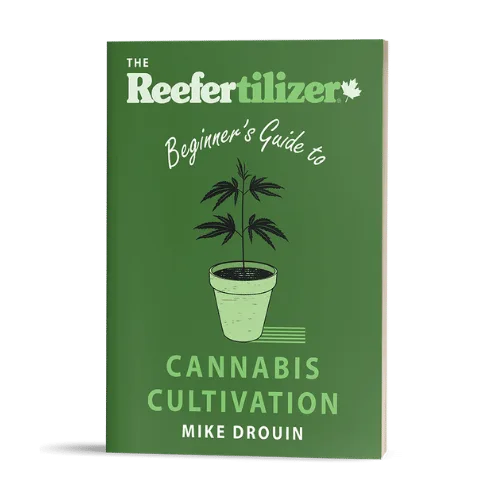
This guide will answer many questions about growing cannabis, like the following...
Selecting Seeds
Identify and Correct Problems
Maximize Yield
Much More...
Get a Chance to INSTANTLY WIN a Reefertilizer Nutrient Kit When You Sign Up.
Elijah Petty is a writer in the cannabis industry. He aims to use his platform to help educate people about cannabis and dispel some of the myths and misinformation that surround the plant.

